
Paul Julius Gottlieb Nipkow was a German technician and inventor. He invented the Nipkow disk, which laid the foundation of television, since his disk was a fundamental component in the first televisions. Hundreds of stations experimented with television broadcasting using his disk in the 1920s and 1930s, until it was superseded by all-electronic systems in the 1940s.

ARD is a joint organisation of Germany's regional public-service broadcasters. It was founded in 1950 in West Germany to represent the common interests of the new, decentralised, post-war broadcasting services – in particular the introduction of a joint television network.
Das Erste is the flagship national television channel of the ARD association of public broadcasting corporations in Germany. Das Erste is jointly operated by the nine regional public broadcasting corporations that are members of the ARD.
Mitteldeutscher Rundfunk, shortened to MDR, is the public broadcaster for the federal states of Thuringia, Saxony and Saxony-Anhalt in Germany. Established in January 1991, its headquarters are in Leipzig, with regional studios in Dresden, Erfurt and Magdeburg. MDR is a member of the ARD consortium of public broadcasters in Germany.
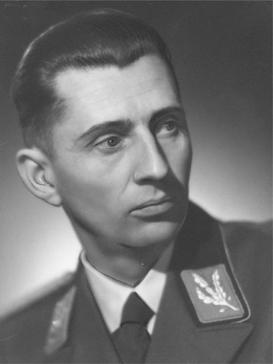
Eugen Paul Hadamovsky was a politician and radio production director in Nazi Germany from 1933 to 1942.
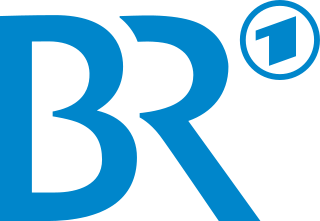
Bayerischer Rundfunk, shortened to BR, is a public-service radio and television broadcaster, based in Munich, capital city of the Free State of Bavaria in Germany. BR is a member organization of the ARD consortium of public broadcasters in Germany.
Television in Germany began in Berlin on 22 March 1935, broadcasting for 90 minutes three times a week. It was home to the first regular television service in the world, named Fernsehsender Paul Nipkow.
A television station is a set of equipment managed by a business, organisation or other entity such as an amateur television (ATV) operator, that transmits video content and audio content via radio waves directly from a transmitter on the earth's surface to any number of tuned receivers simultaneously.

Rundfunk Berlin-Brandenburg, commonly shortened to RBB, is an institution under public law for the German states of Berlin and Brandenburg, based in Berlin and Potsdam. RBB was established on 1 May 2003 through the merger of Sender Freies Berlin (SFB) and Ostdeutscher Rundfunk Brandenburg (ORB), based in Potsdam, and is a member of the Association of PSBs in the Federal Republic of Germany (ARD).

Saarländischer Rundfunk, shortened to SR, is a public radio and television broadcaster serving the German state of Saarland. With headquarters in the Halberg Broadcasting House in Saarbrücken, SR is a member of the ARD consortium of German public-broadcasting organizations.
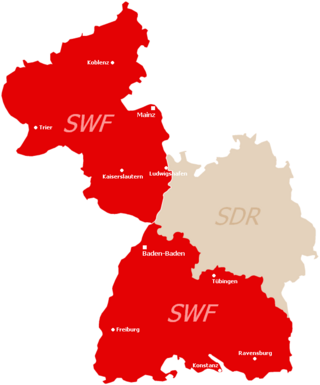
In Bavaria and in Württemberg-Baden, Radio München (Munich) and Radio Stuttgart went on air in 1945. In the next years, Radio München was transformed to a Bavarian broadcaster, and in Germany's South West, two public broadcasting corporations started and produced radio and (subsequent) television programs up to their merger in 1998:

The Haus des Rundfunks, located in the Westend district of Berlin, the capital city of Germany, is the world's oldest self-contained broadcasting centre. Designed by Hans Poelzig in 1929 after he won an architectural competition, the building contains three large centrally located broadcasting spaces, which are shielded from street noise by the surrounding office wings. It is used today by local ARD broadcaster Rundfunk Berlin-Brandenburg (RBB) to make programmes carried by its Inforadio, Kulturradio, and Radio Berlin 88,8 channels. The building's large broadcasting spaces are occasionally also used to host concerts.
The Fernseh AG television company was registered in Berlin on July 3, 1929, by John Logie Baird, Robert Bosch, Zeiss Ikon and D.S. Loewe as partners. John Baird owned Baird Television Ltd. in London, Zeiss Ikon was a camera company in Dresden, D.S. Loewe owned a company in Berlin and Robert Bosch owned a company, Robert Bosch GmbH, in Stuttgart. with an initial capital of 100,000 Reichsmark. Fernseh AG did research and manufacturing of television equipment.
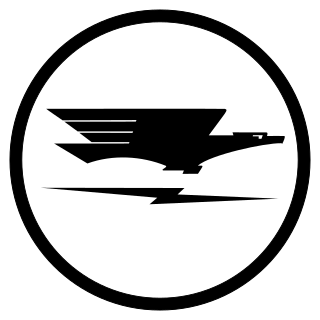
The Reichs-Rundfunk-Gesellschaft was a national network of German regional public radio and television broadcasting companies active from 1925 until 1945. RRG's broadcasts were receivable in all parts of Germany and were used extensively for Nazi propaganda after 1933.
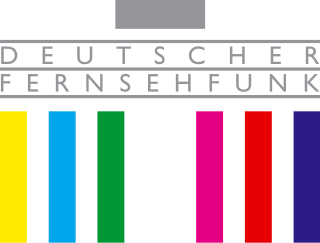
Deutscher Fernsehfunk was the state television broadcaster in the German Democratic Republic from 1952 to 1991.
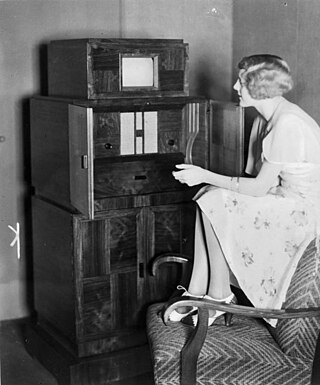
The first regular electronic television service in Germany began in Berlin on March 22, 1935, as Deutscher Fernseh Rundfunk. Broadcasting from the Fernsehsender Paul Nipkow, it used a 180-line system, and was on air for 90 minutes, three times a week. Very few receivers were ever privately owned, and viewers went instead to Fernsehstuben. During the 1936 Summer Olympics, broadcasts, up to eight hours a day, took place in Berlin and Hamburg. The Nazis intended to use television as a medium for their propaganda once the number of television sets was increased, but television was able initially to reach only a small number of viewers, in contrast to radio. Despite many technical improvements to camera technology, allowing for higher resolution imaging, by 1939, and the start of World War II, plans for an expansion of television programming were soon changed in favor of radio. The production of the TV receiver E1, that had just started was cancelled because of the war. Nevertheless, the Berlin station, along with one in occupied Paris, remained on the air for most of World War II. A special magazine called Fernsehen und Tonfilm was published.
Events in the year 1935 in Germany.
Radio Bremen TV is a regional public service television channel owned and operated by Radio Bremen (RB) and serving Bremen, Germany. It is one of seven regional "third programs". The name reflects the fact these programs all came into existence after the Second German Channel was founded in 1961. They are organized within the federal network ARD.
The world's first scheduled, high-definition television programmes were broadcast on 2 November 1936 by the British Broadcasting Corporation. They had been preceded by a number of low-definition BBC test broadcasts, as well as a 180-line Deutscher Fernseh Rundfunk service, from Berlin, since March 1935.











